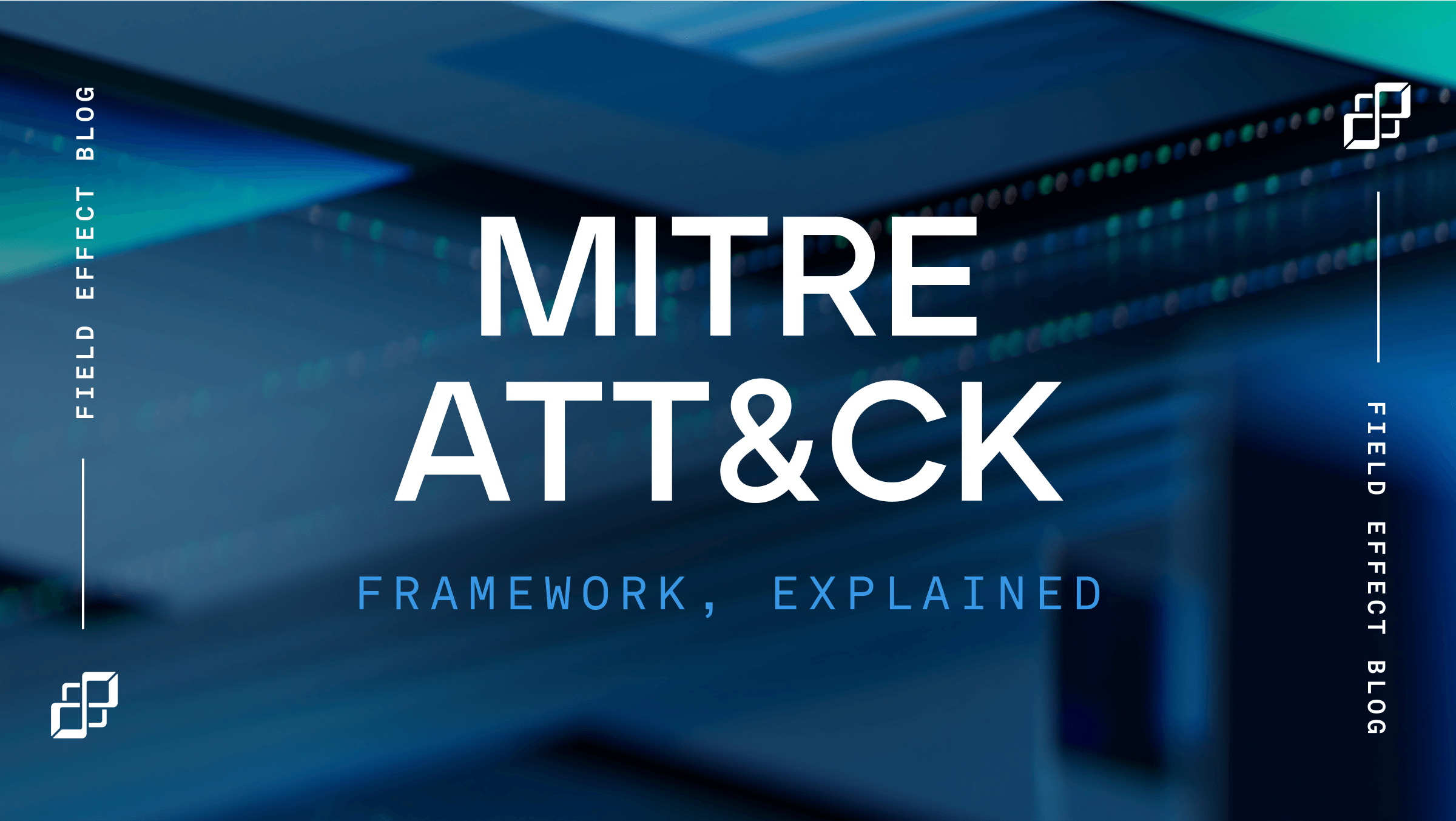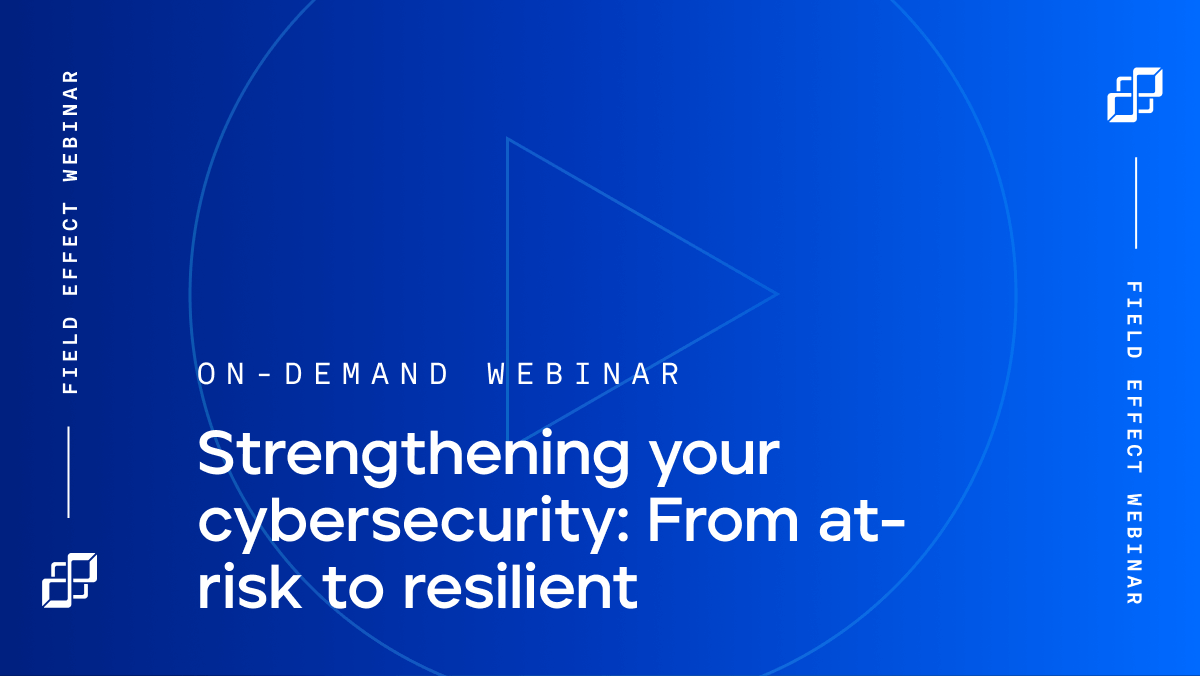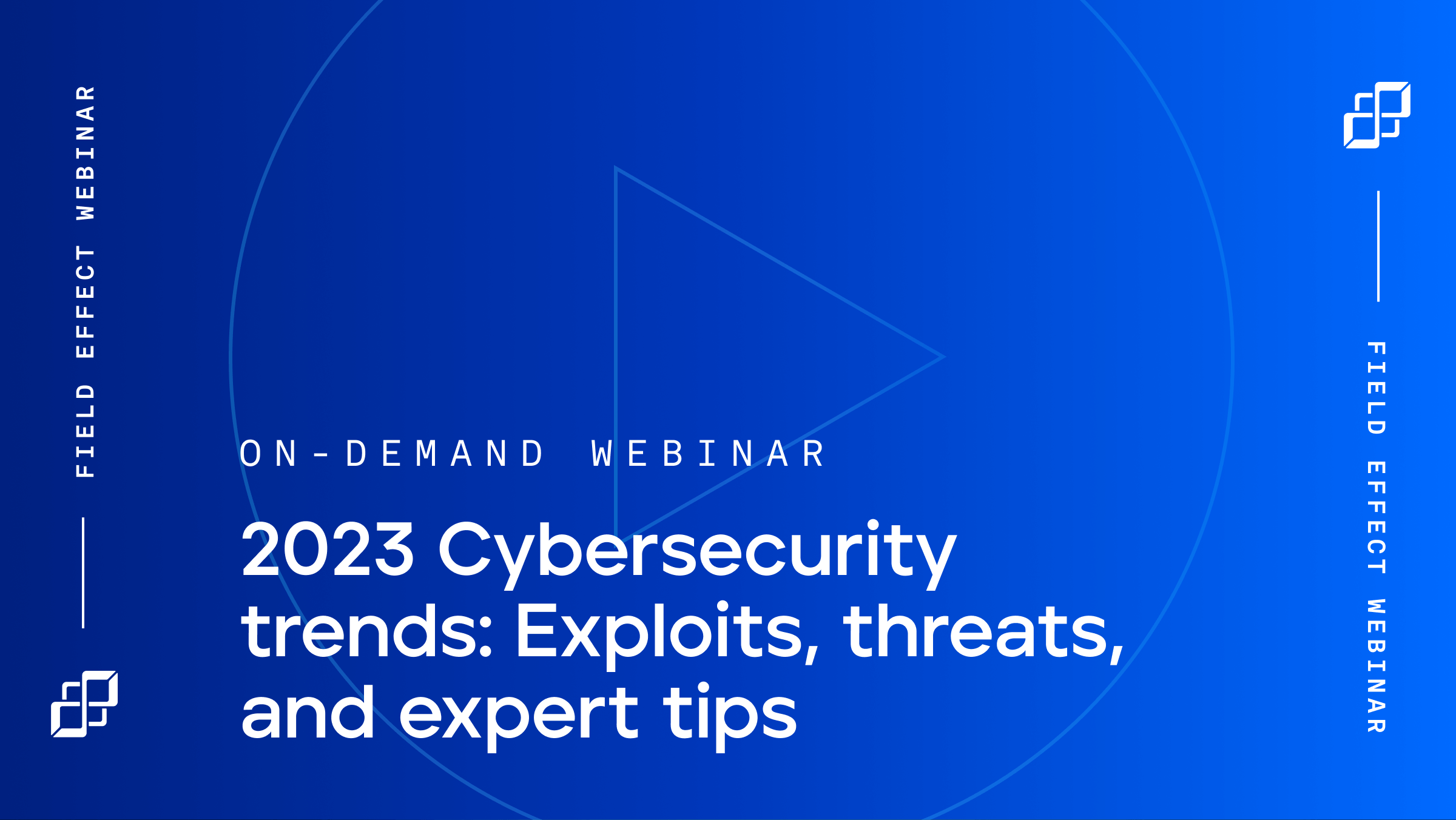
Blog Post
April 13, 2023 | Cybersecurity education
By Field Effect
In the acronym-heavy world of cybersecurity, navigating the landscape of defense tools is tricky. Threat detection and response solutions such as MDR, XDR, and EDR are growing in popularity, particularly as cyberattacks grow more sophisticated and bypass traditional defenses such as firewalls and antiviruses.
Traditional defenses are often either too reactive—only responding to security incidents as they occur—or too reliant on indicators of known threats such as malware signatures. On the other hand, proactive solutions can help you stop attacks in their early stages or, even better, before they happen.
EDR and MDR are two of the main types of detection and response that can help you proactively uncover the stealthiest and most complex attacks. But how do you know which one is best for your business? This article aims to dive into these offerings and help better inform your choice between endpoint detection and response or managed detection and response.
To truly understand EDR and MDR, it’s important to take a step back and closely examine the general class of security solutions and services focused on threat detection and response.
Threat detection and response can use any combination of software, behavioral analysis, AI, and threat intelligence to identify and neutralize known and unknown threats. Threat detection and response tools equip you with the speed needed to contain breaches and minimize both the damage and cost to your business.
While the most advanced and evasive cyber threats that evade your preventative defenses usually use new methods, code, or technologies, sometimes even known threats can slip by. This happens because there are several different types of detection and response technologies and services that come with their own capabilities and scope.
So, what makes an effective detection and response solution? One that actually works to keep your business safe from advanced threats without adding unnecessary complexity? There are a few key features to look for.
The most technical adversaries constantly tweak and refine their attack methods to maximize the chances of intruding undetected into networks and stealing data or conducting espionage. This hacker innovation is quite evident in the advanced forms of malware that can evade detection by antivirus and other preventative tools.
This evasiveness may come in the form of polymorphic malware that alters its own identifiable features. Other times, it includes fileless malware like DarkWatchman that hides in legitimate operating system functions, programs, and services.
Effective threat detection tools and services should use behavioral analysis to find anomalies and search for other indicators of attacks to help flag these more sophisticated forms of malware. Mere pattern-matching, as is the case with signature scanning, will struggle to detect or block advanced malware threats.
Alert fatigue is a huge problem in cybersecurity that plagues response to genuine incidents. Inundated with so many alerts from multiple systems, many of which end up being false positives, security analysts end up becoming numb to or ignoring important security alerts.
Even at large companies with over 5000 employees, security teams end up ignoring about 23% of the threat alerts they receive.
A pillar of any detection and response tool worth its value is that it should generate high-quality alerts. Good security alerts reduce time spent investigating false positives and ensure security teams focus on genuine threats, whether they’re occurring on endpoints, in the cloud, or on your network.
There will always be mountains of security data, especially with the rate at which businesses are adopting more devices and cloud-based services. A great cybersecurity solution, however, can distill all of this data down into understandable, actionable alerts.
Speaking of endpoints, the cloud, and your network environment, one way to distinguish between detection and response tools or services is in where they detect threats.
With IT ecosystems being more complex, endpoints aren’t limited to employee workstations, network traffic includes much more traffic originating from outside the physical perimeter of your company, and cloud infrastructure gets used to host more apps and data than ever.
Detection and response must account for this growing IT complexity when helping you find and respond to threats. When evaluating threat detection and response solutions, it’s important that it provides holistic visibility to identify and stop attacks across the entirety of your IT infrastructure.
Endpoint detection and response security solutions apply threat detection, monitoring, and response capabilities to the endpoint devices in your IT ecosystem. These devices may include workstations, laptops, tablets, smartphones, and other devices connected to your network.
EDR tools typically work by:
The main compelling argument for EDR is that endpoints represent one of the main sources of malicious activity. In fact, 2019 research by the IDC found 70% of successful breaches started at the endpoint level.
Threat actors know that targeting end users and their devices drives up the success of their cyberattacks due to user susceptibility to phishing, undermanaged IT inventories, and a general lack of widespread cyber training and awareness.
When trying to decide between different tools, it’s important to consider how well the tool integrates with your existing stack of security solutions, the frequency of updates, and the performance footprint that various solutions have on your endpoints.
Another key thing to consider is whether you opt for an agent-based or agentless EDR solution. An agent-based tool can capture a lot of user activity and event data as it’s installed directly on your endpoint devices. An agentless solution has the advantage of accommodating a wider variety of endpoints and operating systems, as some devices, such as IoT devices, aren’t supported by agent-based solutions.
Managed detection response is an outsourced security service in which a team of third-party experts handles monitoring, threat detection, and response capabilities. The main thing differentiator here is that MDR is a managed service rather than a type of technology.
MDR providers may use various technologies to provide detection and response capabilities. Some MDR services focus more on managing specific products, so they mainly configure, tweak, and run a given type of tool for you. Others may be more service-focused, offering general detection and response capabilities using a broad set of their tools and yours.
MDR helps you augment or expand in-house security operations in a more cost-effective way than going out and recruiting a roster of new hires. Another huge benefit is the round-the-clock threat monitoring and detection from cybersecurity experts which is often not possible with an in-house team.
Typically, when handling response capabilities, you can choose different levels of coverage and involvement. In some cases, the MDR provider offers to handle everything for you; others might offer to triage alerts so you can focus on dealing with the most critical threats first.
It’s also common to see cases where the MDR team guides your in-house IT or security team through the entire process of containing and remediating a threat.
Perhaps the most vital point your choice should account for is the completeness and functionality of detection and response that you want or need.
Bear in mind that MDR service offerings vary quite widely in this regard, with some literally just offering to manage an EDR solution for you. Other MDR providers encompass a more holistic approach that covers threat detection and response for cloud services and network traffic in addition to endpoints.
Since endpoints present the highest risk of threats slipping past your other security defenses, it might seem like EDR is all you need. But it’s important to recognize that there are cost-effective, holistic MDR options that outperform the limited protections of an EDR.
Furthermore, MDR alleviates a large burden on your in-house security team (if you have one).
Now that you’re more informed about the choice between EDR vs MDR, taking a look at where the market is trending can provide a useful final bit of guidance. The MDR market is expected to grow to $5.6 billion by 2027 as more companies suffer from security staff shortages while also wanting to consolidate their cybersecurity tools or vendors.
Covalence is our holistic MDR solution with coverage for your business across endpoints, networks, and the cloud. A combination of sophisticated technology and human expertise drives 24/7 monitoring, clear and accurate alerts, and defense against advanced threats. Book your demo here.


